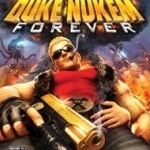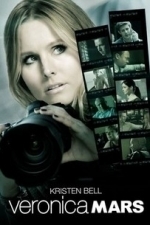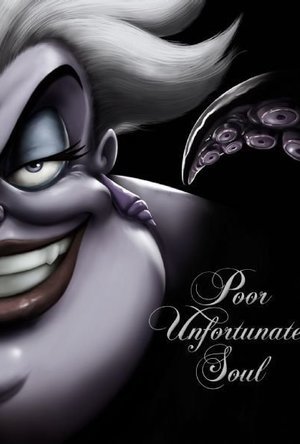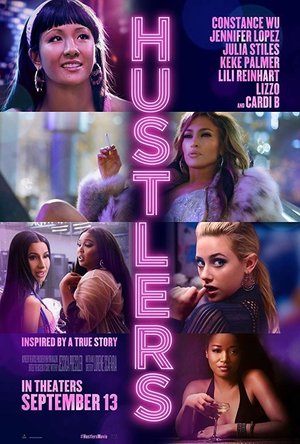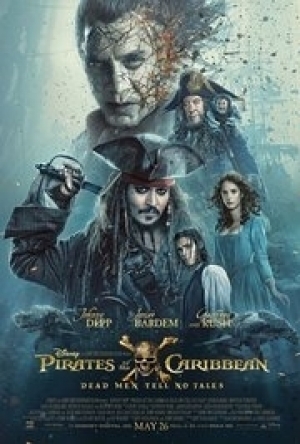Search
Search results
Lee KM Pallatina (951 KP) rated the Xbox 360 version of Duke Nukem Forever in Video Games
Mar 20, 2020
Hail to the clone baby
Contains spoilers, click to show
Duke Nukem was originally created in 1987 by chief programmer Todd Replogle of Apogee Software now 3D Realms as the hero the video game titled Metal Future, which was set in the then-near future of 1997.
Duke Nukem's first appearance was in 1997,
Created by George Broussard; Scott Miller; Jim Norwood; Todd Replogle
Dukes last appearance was a Cameo in the 2018 movie Ready Player One.
The character first appeared in the 1991 video game Duke Nukem. He has since starred in multiple sequels developed by 3D Realms. Most recently in Duke Nukem Forever, released by Gearbox Software, which now owns the rights and intellectual property.
Duke Nukem has been listed on many "Best Characters" and "Best Heroes" lists over the years, including being listed as number one in ScrewAttack's "Top 10 Coolest Video Game Characters" list in 2007.
Featuring him in the section "top ten forces of good" in their 2004 list of top 50 retro game heroes, Retro Gamer called Duke "the ultimate cheese hero, and a true remnant of 80’s action flicks. He was listed at number 27 in the "Top 50 Video Game Characters" list by Guinness World Records Gamer's Edition 2011. GameDaily also ranked him sixth on their list of best anti-heroes in video games. In 2011, Empire ranked him as the 20th greatest video game character, calling him "one of the best action characters ever devised" and adding that "Film might have Schwarzenegger, but Gaming's got Mr Nukem"
Reception of the character by the time of Duke Nukem Forever's release was mostly mixed. Dan Whitehead of Eurogamer elaborated on Duke Nukem's decreased relevance since 1996, and added that the character's "half-hearted digs" at rival franchises were ill-advised due to the game's delayed release (Yet still quite funny).
Duke Nukem had become "a caricature of his former self. crossing the line from charmingly foul-mouthed to obnoxious and embarrassing. Others have been more positive about the character, finding him to be "genuinely hilarious" due to his tongue-in-cheek rejection of video game traditions (such as finding a key to open a door or wearing a special suit of armor) (looking at you Master Chief).
Plot:
Twelve years after he saved the Earth from an alien invasion, Duke Nukem is a worldwide icon, and has achieved great fame from his heroic deeds. After sampling a video game based on his past heroics (the game Duke plays is a revamped version of the final level of the third episode of Duke Nukem 3D), he arrives on the set of a talk show for an interview. On his way to the show, Duke witnesses a news broadcast announcing that aliens have once again invaded. Unlike previous encounters, the aliens initially appear peaceful and at first seem to pose no harm to the humans of Earth.
Duke's talk show appearance is cancelled to allow television stations to cover the alien invasion, and Duke retires to the "Duke Cave", his personal home. There, he receives a call from the President and General Graves of the Earth Defense Force (EDF). The President orders Duke not to harm the invaders, and adds that he is in diplomatic talks with the alien overlord. Duke obliges this request, but he and Graves remain uneasy about the whole situation. Before he can leave his chambers, he is attacked by hostile aliens who are swearing revenge on Duke.
Pig cops, flying Alien brains and a 3 breasted Alien are among the carnage that is a day in the life of the king.
DLC sub plot-
The doctor who cloned me:
After all the negativity duke Nukem forever received, this DLC was released in an attempt to undo some of the damage, this extension had you play as the Real duke, who wakes up to find and army of clones posing as him created by his old nemesis doctor proton, to which you/Nukem must take out all the clones and reclaim your Throne.
(The main game duke was a clone, if I wasn't clear :) )
Duke Nukem's first appearance was in 1997,
Created by George Broussard; Scott Miller; Jim Norwood; Todd Replogle
Dukes last appearance was a Cameo in the 2018 movie Ready Player One.
The character first appeared in the 1991 video game Duke Nukem. He has since starred in multiple sequels developed by 3D Realms. Most recently in Duke Nukem Forever, released by Gearbox Software, which now owns the rights and intellectual property.
Duke Nukem has been listed on many "Best Characters" and "Best Heroes" lists over the years, including being listed as number one in ScrewAttack's "Top 10 Coolest Video Game Characters" list in 2007.
Featuring him in the section "top ten forces of good" in their 2004 list of top 50 retro game heroes, Retro Gamer called Duke "the ultimate cheese hero, and a true remnant of 80’s action flicks. He was listed at number 27 in the "Top 50 Video Game Characters" list by Guinness World Records Gamer's Edition 2011. GameDaily also ranked him sixth on their list of best anti-heroes in video games. In 2011, Empire ranked him as the 20th greatest video game character, calling him "one of the best action characters ever devised" and adding that "Film might have Schwarzenegger, but Gaming's got Mr Nukem"
Reception of the character by the time of Duke Nukem Forever's release was mostly mixed. Dan Whitehead of Eurogamer elaborated on Duke Nukem's decreased relevance since 1996, and added that the character's "half-hearted digs" at rival franchises were ill-advised due to the game's delayed release (Yet still quite funny).
Duke Nukem had become "a caricature of his former self. crossing the line from charmingly foul-mouthed to obnoxious and embarrassing. Others have been more positive about the character, finding him to be "genuinely hilarious" due to his tongue-in-cheek rejection of video game traditions (such as finding a key to open a door or wearing a special suit of armor) (looking at you Master Chief).
Plot:
Twelve years after he saved the Earth from an alien invasion, Duke Nukem is a worldwide icon, and has achieved great fame from his heroic deeds. After sampling a video game based on his past heroics (the game Duke plays is a revamped version of the final level of the third episode of Duke Nukem 3D), he arrives on the set of a talk show for an interview. On his way to the show, Duke witnesses a news broadcast announcing that aliens have once again invaded. Unlike previous encounters, the aliens initially appear peaceful and at first seem to pose no harm to the humans of Earth.
Duke's talk show appearance is cancelled to allow television stations to cover the alien invasion, and Duke retires to the "Duke Cave", his personal home. There, he receives a call from the President and General Graves of the Earth Defense Force (EDF). The President orders Duke not to harm the invaders, and adds that he is in diplomatic talks with the alien overlord. Duke obliges this request, but he and Graves remain uneasy about the whole situation. Before he can leave his chambers, he is attacked by hostile aliens who are swearing revenge on Duke.
Pig cops, flying Alien brains and a 3 breasted Alien are among the carnage that is a day in the life of the king.
DLC sub plot-
The doctor who cloned me:
After all the negativity duke Nukem forever received, this DLC was released in an attempt to undo some of the damage, this extension had you play as the Real duke, who wakes up to find and army of clones posing as him created by his old nemesis doctor proton, to which you/Nukem must take out all the clones and reclaim your Throne.
(The main game duke was a clone, if I wasn't clear :) )
Gareth von Kallenbach (980 KP) rated Veronica Mars (2014) in Movies
Aug 6, 2019
The incomparable Rob Thomas has delivered a masterpiece of dramatic film that all Veronica Mars fans will thoroughly enjoy.
(Note: I am a rabid fan of the Veronica Mars TV series. Much of the review will be clearly colored by this.)
10 years after the debut of an exceptional TV show, and eight years after it was unceremoniously pulled from the airwaves, Rob Thomas put up a Kickstarter campaign to fund a movie. It had a goal of $2 million, which would get the movie made — but it wouldn’t get us much.
As it turned out, 91,585 people liked his plan to create a film that would wrap up storylines from the series. They liked it enough that rather than pledging just $2 million, the backers generated over $5.7 million.
In the process of doing so, they achieved a number of amazing Kickstarter awards:
Fastest project to reach $1 million.
Fastest project to reach $2 million.
All-time highest-funded project in the FILM category.
Third-highest-funded project in Kickstarter history.
Most project backers of any project in Kickstarter history.
On to the movie itself.
The movies share its title with the TV show: Veronica Mars. It opens with a quick recap of the show’s two-season run before launching forward to a time 10 years after the series ended (intelligently appropriate, Rob).
Veronica (Kristen Bell) is primed to take the bar exam and become a lawyer. For a reason I can’t explain, she is interviewing with a very prestigious law firm in New York City. It’s a firm which, I have to imagine, doesn’t hire people fresh out of school, especially those who haven’t even passed the bar yet.
In the midst of her interviews, she gets a call from an old high school love interest, Logan Echolls (Jason Dohring). He has been accused of murder (again).
Naturally, Veronica decides to pack up, say goodbye to her boyfriend, Stosh “piz” Piznarski (Chris Lowell), and head back to her sunny home town of Neptune, California.
Logan, an Air Force pilot, is relieved to see his friend. He starts bringing her up to speed, and shortly thereafter, the rest of the familiar faces join in: Gia Goodman (Krysten Ritter), Mac (Cindy Majorino), Dick Casablancas (Ryan Hansen), Weevil (Francis Copa), Keith Mars (Enrico Colantoni), Wallace Fennel (Percy Daggs III), and many more that will delight returning viewers.
As you might imagine, a complex series of issues comes to light, creating a symphony of drama, and, in typical Rob-Thomas fashion, some true laugh-out-loud moments.
While this is a great standalone film, it is peppered with many humorous references and nods to the movie’s predecessor. If you are a fan of the series, you won’t be disappointed. There are many giggle-worthy moments: from the guy on the street singing, “we used to be friends,” to Dax Shepard’s appearance, to the mention of Veronica supposedly going to work for the FBI (referring to a potential third season).
My only real note of contention is, admittedly, somewhat petty. Kristen Bell was just recovering from having her child with husband Dax Shepard. The unfortunate (and expected) weight gain from that wonderful life event left her looking very unlike the character we all fell in love with, and distracted from the film. I’m curious to know why they couldn’t have waited a few more months to start filming, to allow Bell to get back into shape for the movie.
Aside from that one tiny note, the film was fantastic. The script was masterfully written, the acting superb, the humor gut-heaving, and the drama well done.
Cinematography for the film was indistinguishable from other high-quality films, and it’s easy to see that a lot of time, effort, and care went into it. Its creators ensured that the $5.7 million of pledges went into a work of art that does not disappoint.
As one of the 91,000+ backers, I am proud to be a part of this community effort. As a huge fan of Thomas, the series, and the mythos, I am ecstatic to report that this is an excellent film.
(Note: I am a rabid fan of the Veronica Mars TV series. Much of the review will be clearly colored by this.)
10 years after the debut of an exceptional TV show, and eight years after it was unceremoniously pulled from the airwaves, Rob Thomas put up a Kickstarter campaign to fund a movie. It had a goal of $2 million, which would get the movie made — but it wouldn’t get us much.
As it turned out, 91,585 people liked his plan to create a film that would wrap up storylines from the series. They liked it enough that rather than pledging just $2 million, the backers generated over $5.7 million.
In the process of doing so, they achieved a number of amazing Kickstarter awards:
Fastest project to reach $1 million.
Fastest project to reach $2 million.
All-time highest-funded project in the FILM category.
Third-highest-funded project in Kickstarter history.
Most project backers of any project in Kickstarter history.
On to the movie itself.
The movies share its title with the TV show: Veronica Mars. It opens with a quick recap of the show’s two-season run before launching forward to a time 10 years after the series ended (intelligently appropriate, Rob).
Veronica (Kristen Bell) is primed to take the bar exam and become a lawyer. For a reason I can’t explain, she is interviewing with a very prestigious law firm in New York City. It’s a firm which, I have to imagine, doesn’t hire people fresh out of school, especially those who haven’t even passed the bar yet.
In the midst of her interviews, she gets a call from an old high school love interest, Logan Echolls (Jason Dohring). He has been accused of murder (again).
Naturally, Veronica decides to pack up, say goodbye to her boyfriend, Stosh “piz” Piznarski (Chris Lowell), and head back to her sunny home town of Neptune, California.
Logan, an Air Force pilot, is relieved to see his friend. He starts bringing her up to speed, and shortly thereafter, the rest of the familiar faces join in: Gia Goodman (Krysten Ritter), Mac (Cindy Majorino), Dick Casablancas (Ryan Hansen), Weevil (Francis Copa), Keith Mars (Enrico Colantoni), Wallace Fennel (Percy Daggs III), and many more that will delight returning viewers.
As you might imagine, a complex series of issues comes to light, creating a symphony of drama, and, in typical Rob-Thomas fashion, some true laugh-out-loud moments.
While this is a great standalone film, it is peppered with many humorous references and nods to the movie’s predecessor. If you are a fan of the series, you won’t be disappointed. There are many giggle-worthy moments: from the guy on the street singing, “we used to be friends,” to Dax Shepard’s appearance, to the mention of Veronica supposedly going to work for the FBI (referring to a potential third season).
My only real note of contention is, admittedly, somewhat petty. Kristen Bell was just recovering from having her child with husband Dax Shepard. The unfortunate (and expected) weight gain from that wonderful life event left her looking very unlike the character we all fell in love with, and distracted from the film. I’m curious to know why they couldn’t have waited a few more months to start filming, to allow Bell to get back into shape for the movie.
Aside from that one tiny note, the film was fantastic. The script was masterfully written, the acting superb, the humor gut-heaving, and the drama well done.
Cinematography for the film was indistinguishable from other high-quality films, and it’s easy to see that a lot of time, effort, and care went into it. Its creators ensured that the $5.7 million of pledges went into a work of art that does not disappoint.
As one of the 91,000+ backers, I am proud to be a part of this community effort. As a huge fan of Thomas, the series, and the mythos, I am ecstatic to report that this is an excellent film.

Feng Shui Calc and Compass: Home and Business
Lifestyle and Utilities
App
★★★The Best Feng Shui App you will ever experience!★★★ ★★★New Feature: Share your...
Bob Mann (459 KP) rated Jungle Cruise (2021) in Movies
Aug 2, 2021
Star power from Johnson and Blunt (1 more)
Direction, cinematography, special effects and score all top notch
An Amazon-based blockbuster that delivers!
Dating from 1955, Jungle Cruise was one of the key attractions at Disneyland when it first opened. Full of corny spiel from the lovable boat captains, the experience is nicely evoked in the new Disney movie: a true summer blockbuster that delights.
Positives:
- Cut the movie open and it reads "summer blockbuster pleaser" through the middle. This is largely down to the charisma of its two stars, Blunt and Johnson, who prove why they are both such bankable commodities. It's clearly based on the "will they/won't they" simmering sexual chemistry between two polar-opposites, as featured in movies such as "Romancing the Stone" and "The African Queen". (Since the theme park ride was heavily influenced by the latter, this is no surprise). But there's also a heavy dose of tongue-in-cheek ridiculousness as featured in other great B-movie homages such as "The Mummy" and (most notably) "Raiders of the Lost Ark". (A few scenes directly mimic the Indiana Jones movies.)
- The supporting cast also have fun with their roles. Jack Whitehouse, doing almost a like-for-like copy of John Hannah's character in "The Mummy", could have been extremely annoying. But although he's the comic relief in the piece, he steers it just the right side of farcical, avoiding Jar-Jar Binks territory. ("When in Rome" he declares, swallowing a flagon of fermented spit. "God - I wish I was in Rome"!) Jesse Plemons, one of my favourite actors, who proved his comic chops in "Game Night", here delivers one of the most over-the-top Nazis since Ronald Lacey's Toht in "Raiders". Rounding things off is Paul Giamatti with a bizarrely comic performance as Nilo, a competing riverboat owner.
- Special effects, cinematography (Flavio Martínez Labiano, of "The Shallows") and James Newton-Howard's score all add to the lush blockbuster feel of the movie. And director Jaume Collet-Serra (who did the clever shark B-movie "The Shallows") keeps the movie clipping along at a fine rate, with only a few sections of character-building dialogue to get the kids fidgety.
Negatives:
- I mean, it's popcorn nonsense of course. The Amazonian 'McGuffin' is a tree that only comes to life under very specific conditions. And isn't it amazing that watery machinery (developed by who?) still works after at least 400 years, when my dishwasher gives up after ten? (But it's done with verve and style, so who cares?)
- Although the screenplay is actually very slick for a movie of this type, it feels like a script by committee at times. A single writer might have been tempted to duck the Hollywood ending and leave things on a more thoughtful, albeit downbeat, note.
Summary Thoughts on "Jungle Cruise": This was a pleasant surprise for me. A fun and light-hearted movie that ticks all the boxes as a summer blockbuster. It nicely evokes the cheesiness of the theme park ride operator (past alumni have included Robin Williams and Kevin Costner), especially with Johnson's opening scenes. But then rounds it out as a spectacular and appealing tongue-in-cheek adventure.
And, by the way, in case you fancy sitting through the interminable end titles to watch a post-credits scene.... there isn't one.
(#takenonefortheteam).
Parental Guidance: One question might be whether, with a "12A" certificate, this summer blockbuster is one that your kids might enjoy or be freaked out by. A comparison with "Raiders of the Lost Ark" is perhaps useful here. There are quite a number of "jolts" involving snakes and bees but probably not as bad as the ones you get in an uncut version of "Raiders" (think the spiked Satipo; the mummies/snakes when escaping the 'Well of Souls'; and the melting Nazi bad-guys). So if you have kids that lapped up that stuff then I don't think they would have any issues with this one.
(For the full graphical review, please check out One Mann's Movies on the web, Facebook or Tiktok. Thanks).
Positives:
- Cut the movie open and it reads "summer blockbuster pleaser" through the middle. This is largely down to the charisma of its two stars, Blunt and Johnson, who prove why they are both such bankable commodities. It's clearly based on the "will they/won't they" simmering sexual chemistry between two polar-opposites, as featured in movies such as "Romancing the Stone" and "The African Queen". (Since the theme park ride was heavily influenced by the latter, this is no surprise). But there's also a heavy dose of tongue-in-cheek ridiculousness as featured in other great B-movie homages such as "The Mummy" and (most notably) "Raiders of the Lost Ark". (A few scenes directly mimic the Indiana Jones movies.)
- The supporting cast also have fun with their roles. Jack Whitehouse, doing almost a like-for-like copy of John Hannah's character in "The Mummy", could have been extremely annoying. But although he's the comic relief in the piece, he steers it just the right side of farcical, avoiding Jar-Jar Binks territory. ("When in Rome" he declares, swallowing a flagon of fermented spit. "God - I wish I was in Rome"!) Jesse Plemons, one of my favourite actors, who proved his comic chops in "Game Night", here delivers one of the most over-the-top Nazis since Ronald Lacey's Toht in "Raiders". Rounding things off is Paul Giamatti with a bizarrely comic performance as Nilo, a competing riverboat owner.
- Special effects, cinematography (Flavio Martínez Labiano, of "The Shallows") and James Newton-Howard's score all add to the lush blockbuster feel of the movie. And director Jaume Collet-Serra (who did the clever shark B-movie "The Shallows") keeps the movie clipping along at a fine rate, with only a few sections of character-building dialogue to get the kids fidgety.
Negatives:
- I mean, it's popcorn nonsense of course. The Amazonian 'McGuffin' is a tree that only comes to life under very specific conditions. And isn't it amazing that watery machinery (developed by who?) still works after at least 400 years, when my dishwasher gives up after ten? (But it's done with verve and style, so who cares?)
- Although the screenplay is actually very slick for a movie of this type, it feels like a script by committee at times. A single writer might have been tempted to duck the Hollywood ending and leave things on a more thoughtful, albeit downbeat, note.
Summary Thoughts on "Jungle Cruise": This was a pleasant surprise for me. A fun and light-hearted movie that ticks all the boxes as a summer blockbuster. It nicely evokes the cheesiness of the theme park ride operator (past alumni have included Robin Williams and Kevin Costner), especially with Johnson's opening scenes. But then rounds it out as a spectacular and appealing tongue-in-cheek adventure.
And, by the way, in case you fancy sitting through the interminable end titles to watch a post-credits scene.... there isn't one.
(#takenonefortheteam).
Parental Guidance: One question might be whether, with a "12A" certificate, this summer blockbuster is one that your kids might enjoy or be freaked out by. A comparison with "Raiders of the Lost Ark" is perhaps useful here. There are quite a number of "jolts" involving snakes and bees but probably not as bad as the ones you get in an uncut version of "Raiders" (think the spiked Satipo; the mummies/snakes when escaping the 'Well of Souls'; and the melting Nazi bad-guys). So if you have kids that lapped up that stuff then I don't think they would have any issues with this one.
(For the full graphical review, please check out One Mann's Movies on the web, Facebook or Tiktok. Thanks).
Lottie disney bookworm (1056 KP) rated Poor Unfortunate Soul: A Tale of the Sea Witch (Villains #3) in Books
Sep 7, 2019
Contains spoilers, click to show
A review by The Disney Bookworm:
The third instalment in Serena Valentino’s villain’s tales is the story of Ursula. I was really looking forward to this: after scaring the beejeeeesus out of me as a kid, Ursula has become my favourite villain as an adult. She definitely projects the body confidence I lack that’s for sure!
Regular readers will know I was left a little disappointed by The Beast Within and so it was with some trepidation that I ventured onto the next novel in the series. However, I was too tempted by the promise of a backstory to my favourite sassy octopus.
Poor Unfortunate Soul starts off really well, as is the case with all Valentino’s books. We meet Ursula as an orphaned human girl, raised by a loving adoptive father but never accepted by the villagers around her. She is acutely aware that she is different and is constantly drawn to the sea. However, when the villagers realise Ursula’s true form and start a literal witch hunt, her father tries to protect her and it ends tragically.
Vengeful and alone, Ursula returns to the sea and discovers her family isn’t lost to her after all: she has a brother, Triton.
Unfortunately, but not surprisingly, Triton and Ursula are not destined for an emotional reunion and a game of happy families. Instead, Triton wants Ursula to conform to his idea of beauty and live in his kingdom as a mermaid. He also refuses to share his throne with Ursula: something their parents aspired to.
The siblings also disagree over the treatment of humans. Although both despise the race, the sea king disapproves of his sister’s vengeful ways and eventually banishes her from his kingdom. This only adds fuel to Ursula’s rage, causing her to plot to destroy her tyrant brother by using his youngest daughter: Ariel.
We all know how that story goes!
I really enjoyed this backstory to Ursula and the twist that her and Triton were related but separated when they were young. In my opinion it gave me what I wanted from the villains series: empathy for the villain.
However, as was the case in The Beast Within, I was willing for this to be fleshed out more. How were Triton and Ursula separated? What was the kingdom like when the siblings attempted to cohabitate? Ariel’s mother is briefly mentioned as a friend to Ursula – was it her death that permanently severed Triton and Ursula’s relationship? In my opinion, Ursula’s brief relationship with her brother is the lynch pin in her demise but the details are glossed over as an almost appendix in the story. I wanted more of this and less of Tulip!
Ah yes, Tulip is back! Although for the life of me I’m not sure why!
Yes, she was in the last book and we know she made a deal with Ursula.
Yes, she links the books together, particularly with the references to Maleficent’s evil doings in a neighbouring kingdom.
Yes, she has a friendship with Circe and Pflanze: allowing the odd sisters to locate their beloved sister.
Yes, she has a weird nanny who feels like she should be someone but I’m not entirely sure whom.
But dear god she takes up too much of these books. She clearly regained her beauty for a reason and I’m sure her royal suitor has a future role but she just doesn’t interest me as a character. She’s an extra: popping up now and again to make some link in the storyline.
I can’t delve much further into this book without completely ruining the story for you so let me just say that I enjoyed the book more than The Beast Within. Poor Unfortunate Soul gave me the backstory of Ursula and allowed me to witness how her hate and thirst for power consumed her, as well as the consequences of this.
The novel was less heavily involved with the Odd Sisters than The Beast Within. It seemed that the villain was the main focus which was in keeping with Fairest of All and greatly appreciated. However, I was still left wanting more: these are thin books and a quick read; I just feel that the opportunities for developing real, complex villains are being missed.
The third instalment in Serena Valentino’s villain’s tales is the story of Ursula. I was really looking forward to this: after scaring the beejeeeesus out of me as a kid, Ursula has become my favourite villain as an adult. She definitely projects the body confidence I lack that’s for sure!
Regular readers will know I was left a little disappointed by The Beast Within and so it was with some trepidation that I ventured onto the next novel in the series. However, I was too tempted by the promise of a backstory to my favourite sassy octopus.
Poor Unfortunate Soul starts off really well, as is the case with all Valentino’s books. We meet Ursula as an orphaned human girl, raised by a loving adoptive father but never accepted by the villagers around her. She is acutely aware that she is different and is constantly drawn to the sea. However, when the villagers realise Ursula’s true form and start a literal witch hunt, her father tries to protect her and it ends tragically.
Vengeful and alone, Ursula returns to the sea and discovers her family isn’t lost to her after all: she has a brother, Triton.
Unfortunately, but not surprisingly, Triton and Ursula are not destined for an emotional reunion and a game of happy families. Instead, Triton wants Ursula to conform to his idea of beauty and live in his kingdom as a mermaid. He also refuses to share his throne with Ursula: something their parents aspired to.
The siblings also disagree over the treatment of humans. Although both despise the race, the sea king disapproves of his sister’s vengeful ways and eventually banishes her from his kingdom. This only adds fuel to Ursula’s rage, causing her to plot to destroy her tyrant brother by using his youngest daughter: Ariel.
We all know how that story goes!
I really enjoyed this backstory to Ursula and the twist that her and Triton were related but separated when they were young. In my opinion it gave me what I wanted from the villains series: empathy for the villain.
However, as was the case in The Beast Within, I was willing for this to be fleshed out more. How were Triton and Ursula separated? What was the kingdom like when the siblings attempted to cohabitate? Ariel’s mother is briefly mentioned as a friend to Ursula – was it her death that permanently severed Triton and Ursula’s relationship? In my opinion, Ursula’s brief relationship with her brother is the lynch pin in her demise but the details are glossed over as an almost appendix in the story. I wanted more of this and less of Tulip!
Ah yes, Tulip is back! Although for the life of me I’m not sure why!
Yes, she was in the last book and we know she made a deal with Ursula.
Yes, she links the books together, particularly with the references to Maleficent’s evil doings in a neighbouring kingdom.
Yes, she has a friendship with Circe and Pflanze: allowing the odd sisters to locate their beloved sister.
Yes, she has a weird nanny who feels like she should be someone but I’m not entirely sure whom.
But dear god she takes up too much of these books. She clearly regained her beauty for a reason and I’m sure her royal suitor has a future role but she just doesn’t interest me as a character. She’s an extra: popping up now and again to make some link in the storyline.
I can’t delve much further into this book without completely ruining the story for you so let me just say that I enjoyed the book more than The Beast Within. Poor Unfortunate Soul gave me the backstory of Ursula and allowed me to witness how her hate and thirst for power consumed her, as well as the consequences of this.
The novel was less heavily involved with the Odd Sisters than The Beast Within. It seemed that the villain was the main focus which was in keeping with Fairest of All and greatly appreciated. However, I was still left wanting more: these are thin books and a quick read; I just feel that the opportunities for developing real, complex villains are being missed.
BankofMarquis (1832 KP) rated Hustlers (2019) in Movies
Sep 19, 2019
Bland and boring DESPITE J-Lo's performance
When I first saw the trailer for the Jennifer Lopez "strippers get back at scummy Wall Street-types" film, HUSTLERS, I wasn't at all interested in seeing it But then I got wind of strong early reviews with some (very faint) Oscar talk about J-Lo's performance in this film, so I thought I'd check it out.
I should have trusted my instincts.
What a lame disappointment this film is. It starts out flat and then flattens out even further to produce a movie that starts at one (fairly low) level and then stays there the entire time.
HUSTLERS stars Constance Wu (CRAZY, RICH ASIANS) as a a young stripper who is taught the ropes of the stripping game by uber-stripper Jennifer Lopez (if you don't know who this is, then go ahead and skip to the rating of this film at the bottom of this review and move on). When J-Lo's character, Ramona, comes up with an idea to get back at the scummy Wall Street types AND make some money along the way, Wu's character, Destiny (of course) is a reluctant participant becoming - over time - the leader.
A potentially interesting, "based on True Events" story (this film is based on the real life exploits of Ramona as described in a New York Magazine story), this film just falls flat and I put the blame for this in 2 places.
Lets start with Director and Writer of the screenplay, Lorene Scafaria (SEEKING A FRIEND AT THE END OF THE WORLD). She wrote - and directed - this film like it is a modest-scaled, low-key independent film (much like the very good SEEKING A FRIEND...), but the second that this film cast Jennifer Lopez as the flashy leader Ramona, words like modest and low-key should have been thrown out the window but Scafaria chose not to do this, she downplays the best asset in her movie and plunks most of her effort on a lead who could not match Lopez star power wattage.
And that lead is Constance Wu - the other weak link in this chain. I thought she was "just fine" in CRAZY RICH ASIANS, blending into the scenery when more flamboyant personalities were on the screen (in CRA it was Michelle Yeoh's "tiger mom") and she blends into the scenery whenever J-Lo is on the screen in this film - and that just doesn't work here. She needed to step up and step out and match J-Lo blow for blow, but she backs up and backs away in these crucial moments, so when her character is on the screen alone - trying to get the audience's sympathies - I just didn't care.
What I did care about is Jennifer Lopez's performance as Ramona. She is the brightest spot in this film and brings her star power and natural charisma to the screen. The ultimate problem with this performance (and NO, it is NOT Oscar-worthy) is it feels that she is fighting the "low-key" headwinds of writer/director Scafaria the entire time.
Former Disney star Keke Palmer and current RIVERDALE star Lili Reinhart bring some fun and energy to the screen as the 3rd and 4th partners in this quartet of stripper Robin Hoods, but they are all too often sentenced to strut around in the background in tight outfits. I would have loved to see a movie with Lopez, Palmer and Reinhart that was more "out there" and less restrained.
Finally, two very good actresses - Julia Styles and Mercedes Ruehl - are in this film in "what-the-heck-are they-doing-in-this-film" roles that are underwritten and underutilized the talents of these actresses - another missed opportunity by Writer/Director Scafaria.
I've heard this film called a "female empowerment" film or "the stripper version of Goodfellas" and I couldn't disagree more. The only "empowering" part of this film is when the credits rolled and I could leave.
Letter Grade: C
4 stars (out of 10) and you can take that to the Bank(OfMarquis)
I should have trusted my instincts.
What a lame disappointment this film is. It starts out flat and then flattens out even further to produce a movie that starts at one (fairly low) level and then stays there the entire time.
HUSTLERS stars Constance Wu (CRAZY, RICH ASIANS) as a a young stripper who is taught the ropes of the stripping game by uber-stripper Jennifer Lopez (if you don't know who this is, then go ahead and skip to the rating of this film at the bottom of this review and move on). When J-Lo's character, Ramona, comes up with an idea to get back at the scummy Wall Street types AND make some money along the way, Wu's character, Destiny (of course) is a reluctant participant becoming - over time - the leader.
A potentially interesting, "based on True Events" story (this film is based on the real life exploits of Ramona as described in a New York Magazine story), this film just falls flat and I put the blame for this in 2 places.
Lets start with Director and Writer of the screenplay, Lorene Scafaria (SEEKING A FRIEND AT THE END OF THE WORLD). She wrote - and directed - this film like it is a modest-scaled, low-key independent film (much like the very good SEEKING A FRIEND...), but the second that this film cast Jennifer Lopez as the flashy leader Ramona, words like modest and low-key should have been thrown out the window but Scafaria chose not to do this, she downplays the best asset in her movie and plunks most of her effort on a lead who could not match Lopez star power wattage.
And that lead is Constance Wu - the other weak link in this chain. I thought she was "just fine" in CRAZY RICH ASIANS, blending into the scenery when more flamboyant personalities were on the screen (in CRA it was Michelle Yeoh's "tiger mom") and she blends into the scenery whenever J-Lo is on the screen in this film - and that just doesn't work here. She needed to step up and step out and match J-Lo blow for blow, but she backs up and backs away in these crucial moments, so when her character is on the screen alone - trying to get the audience's sympathies - I just didn't care.
What I did care about is Jennifer Lopez's performance as Ramona. She is the brightest spot in this film and brings her star power and natural charisma to the screen. The ultimate problem with this performance (and NO, it is NOT Oscar-worthy) is it feels that she is fighting the "low-key" headwinds of writer/director Scafaria the entire time.
Former Disney star Keke Palmer and current RIVERDALE star Lili Reinhart bring some fun and energy to the screen as the 3rd and 4th partners in this quartet of stripper Robin Hoods, but they are all too often sentenced to strut around in the background in tight outfits. I would have loved to see a movie with Lopez, Palmer and Reinhart that was more "out there" and less restrained.
Finally, two very good actresses - Julia Styles and Mercedes Ruehl - are in this film in "what-the-heck-are they-doing-in-this-film" roles that are underwritten and underutilized the talents of these actresses - another missed opportunity by Writer/Director Scafaria.
I've heard this film called a "female empowerment" film or "the stripper version of Goodfellas" and I couldn't disagree more. The only "empowering" part of this film is when the credits rolled and I could leave.
Letter Grade: C
4 stars (out of 10) and you can take that to the Bank(OfMarquis)

San Andreas Grand Crime City 3D - Drift, Race & Shoot in Real Gangster City Simulator
Games and Entertainment
App
Welcome to the criminal world of Miami Vice City and take up the charge of the Miami Vice Grand...

Doll House Decorating Games 3D – Design Your Virtual Fashion Dream Home
Lifestyle and Games
App
▶▶▶ Design the cutest baby doll house in completely awesome home designing games! ◀◀◀ ...

Khmer Video Dictionary - Translate, Learn and Speak with Video Phrasebook
Travel and Reference
App
In Khmer speaking Cambodia, the title 'Lok' is used to address a man and 'Lok Srey' for a woman,...
Connor Sheffield (293 KP) rated Pirates of the Caribbean: Dead Men Tell No Tales (2017) in Movies
May 27, 2017
Hilarious (2 more)
Great Cast both old and new
New Pirate legend to give the plot a direction
One of the better installments
The 5th film in the Pirates of the Caribbean franchise, certainly had a lot to live up to and some things to make up for after the previous two films didn’t do as well with the critics. With a few of the original cast returning, and some fresh new faces to join them, Salazar’s Revenge was always going to be intriguing, as the audience members such as myself, wanted to know what new fantastical story this new film would tell, what trouble had Captain Jack Sparrow gotten himself into this time, and what idiotic plan would he come up with to get himself out of it.
The new cast included the young and beautiful Kaya Scodelario (Maze Runner / Skins / Moon) as Carina Smith, alongside the also young Brenton Thwaites (Home and Away / Maleficent / Gods of Egypt) as Henry Turner, the son of Will Turner portrayed by Orlando Bloom, who returns to this instalment as only a minor character, but one that sets the film in motion. Both of these new young performers excel in their roles and deliver a performance that is reminiscent of their predecessors in the franchise. Watching these two was like watching Orlando Bloom and Kiera Knightly in The Curse of the Black Pearl, with moments that reminded more so of their evolved relationship in the Dead Man’s Chest. Though Carina and Henry are not (yet) together throughout the film, you can clearly see that their shared goal to reach a mysterious legend that may or may not be true, in honour of their father’s, brings them closer and closer and time goes by and events begin to unravel.
Our new villain, Captain Salazar, is portrayed by Javier Bardem (No Country For Old Men / Skyfall / The Sea Inside) and brilliantly portrayed at that. He’s menacing and ruthless, and very haunting. His goal is clear and he does not rest until he finds Jack Sparrow. This film franchise has seen plenty of cursed men chasing the drunken idiot Captain all over the world, but Salazar is one thing the others were not….he is not a pirate. In fact he is the exact opposite, he was a naval captain for the Spanish and hunted pirates. This was his life, and this was his curse. His hatred of Jack Sparrow runs deeper than any villain set before him and this is what makes the film an exciting experience.
My only issue that whilst it is hilarious and I continued to laugh, this film seemed to be bursting at the seems with jokes and gags which sometimes felt forced. Trying to live up to the humour of the first film, but instead of always being perfectly timed to the right moments now and then, it seems to be in almost every conversation. This doesn't ruin the film in any aspect, just something I picked up on.
The fifth film is, in my opinion, definitely one of the better of the franchise. It excels in being a hilarious, exciting, action packed fantasy film, which is great for an audience of almost any age. Being a Disney film, it is suitable for children under parental guidance and older audiences from the teenagers to the elderly.
The effects get better with each instalment in the franchise and this film proves it with some beautiful imagery of the seas and the events that take place. The films makeup and set design are also incredible and fantastic to witness, as we see new treasures and new ships that take you to a whole new world, right there in the cinema.
If you’re going to watch this film, which I highly recommend, then do so at the cinema because like most films, your experience with the film will not be the same if you don’t watch it on the big screen. I saw this film in IMAX and it was stunning and incredible and just an absolutely thrilling experience.
Salazar’s Revenge (or Dead Men Tell No Tales, as it’s known in America) is most certainly going to be one of my favourite films of the year.
The new cast included the young and beautiful Kaya Scodelario (Maze Runner / Skins / Moon) as Carina Smith, alongside the also young Brenton Thwaites (Home and Away / Maleficent / Gods of Egypt) as Henry Turner, the son of Will Turner portrayed by Orlando Bloom, who returns to this instalment as only a minor character, but one that sets the film in motion. Both of these new young performers excel in their roles and deliver a performance that is reminiscent of their predecessors in the franchise. Watching these two was like watching Orlando Bloom and Kiera Knightly in The Curse of the Black Pearl, with moments that reminded more so of their evolved relationship in the Dead Man’s Chest. Though Carina and Henry are not (yet) together throughout the film, you can clearly see that their shared goal to reach a mysterious legend that may or may not be true, in honour of their father’s, brings them closer and closer and time goes by and events begin to unravel.
Our new villain, Captain Salazar, is portrayed by Javier Bardem (No Country For Old Men / Skyfall / The Sea Inside) and brilliantly portrayed at that. He’s menacing and ruthless, and very haunting. His goal is clear and he does not rest until he finds Jack Sparrow. This film franchise has seen plenty of cursed men chasing the drunken idiot Captain all over the world, but Salazar is one thing the others were not….he is not a pirate. In fact he is the exact opposite, he was a naval captain for the Spanish and hunted pirates. This was his life, and this was his curse. His hatred of Jack Sparrow runs deeper than any villain set before him and this is what makes the film an exciting experience.
My only issue that whilst it is hilarious and I continued to laugh, this film seemed to be bursting at the seems with jokes and gags which sometimes felt forced. Trying to live up to the humour of the first film, but instead of always being perfectly timed to the right moments now and then, it seems to be in almost every conversation. This doesn't ruin the film in any aspect, just something I picked up on.
The fifth film is, in my opinion, definitely one of the better of the franchise. It excels in being a hilarious, exciting, action packed fantasy film, which is great for an audience of almost any age. Being a Disney film, it is suitable for children under parental guidance and older audiences from the teenagers to the elderly.
The effects get better with each instalment in the franchise and this film proves it with some beautiful imagery of the seas and the events that take place. The films makeup and set design are also incredible and fantastic to witness, as we see new treasures and new ships that take you to a whole new world, right there in the cinema.
If you’re going to watch this film, which I highly recommend, then do so at the cinema because like most films, your experience with the film will not be the same if you don’t watch it on the big screen. I saw this film in IMAX and it was stunning and incredible and just an absolutely thrilling experience.
Salazar’s Revenge (or Dead Men Tell No Tales, as it’s known in America) is most certainly going to be one of my favourite films of the year.
